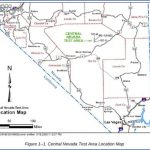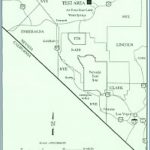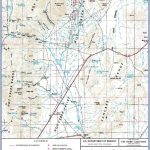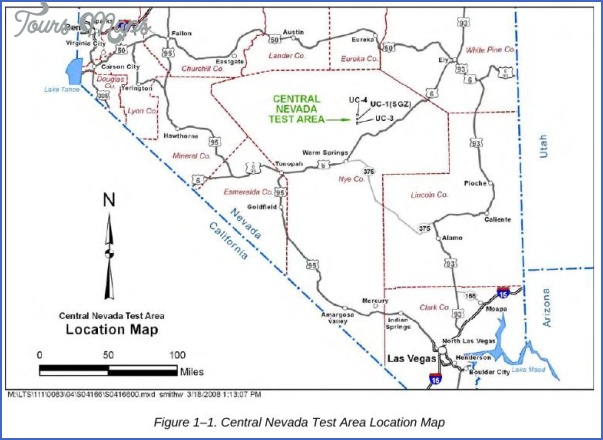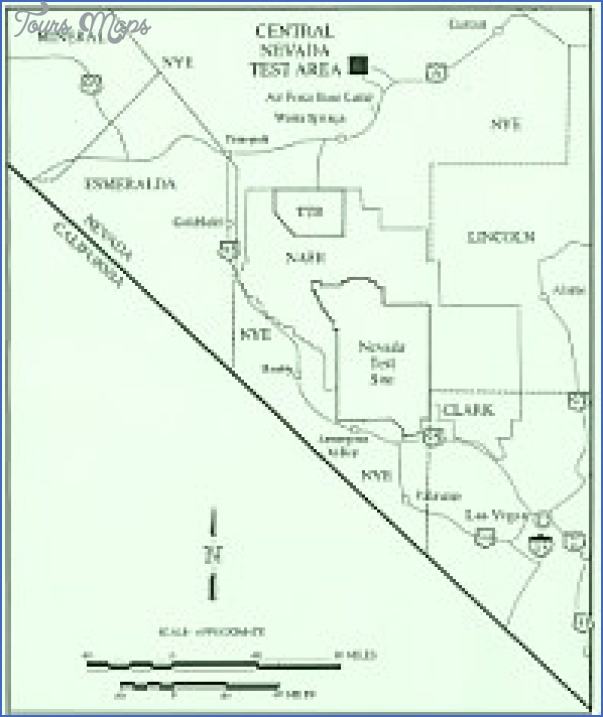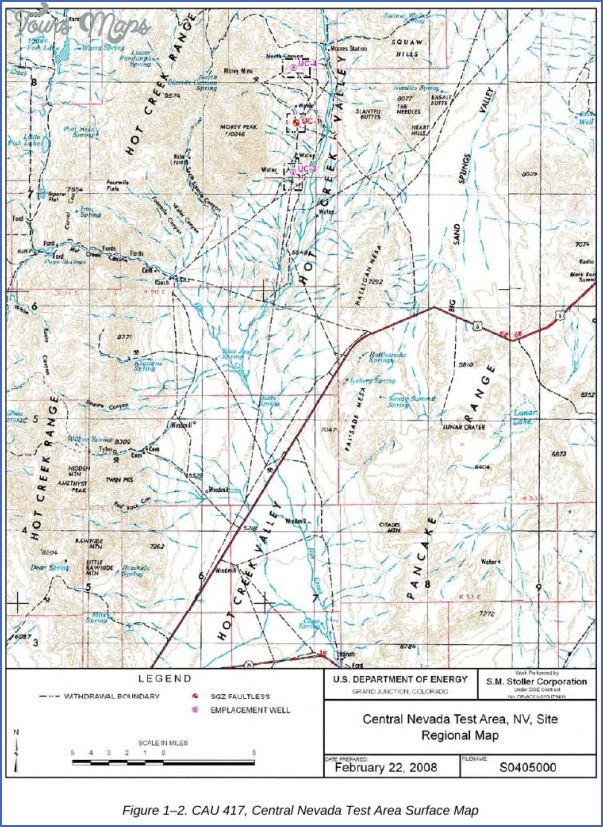The site of a one-megaton hydrogen bomb test on public land that you can freely visit I’m kidding, right? Nope! But be sure to obey that sign that tells you not to dig or take any soil, okay?
By the mid-1960s, the atomic bomb tests at the Nevada Test Site were no longer tourist attractions for Las Vegas. In fact, they were the opposite some people were afraid to visit Las Vegas, and conventions were being cancelled in the city, because of fears that a test could go awry and destroy the city. While all tests after 1963 were conducted underground, they did produce earthquake-like effects (including swaying buildings) in Las Vegas. Pressured to find a new test site, the Atomic Energy Commission selected a tentative new site in the northeastern corner of Nye County, about 30 miles from the intersections of Highways 6 and 375. To determine whether this site had the proper geology for underground testing, a “calibration” hydrogen bomb of one megaton was detonated at a depth of 3,200 feet on January 19, 1968. While the bomb was a success, the test was a failure because the land was shown to be too geologically fragile to reliably contain the radioactivity from an underground test. However, that same site today is not restricted and can be visited by anyone.
The test site was approximately 75 miles east of Tonopah, and there was strong public opposition there and among ranchers in the area to the proposed tests. To counteract such opposition, the AEC decided on a policy of openness instead of the secrecy that cloaked tests at the NTS. A group of civilians from the region would be allowed to observe the first test, called “Project Faultless,” from a location “safely” away from ground zero. Economic benefits, such as an influx of highly paid nuclear scientists needing gasoline, food, and housing, were stressed by the AEC in an attempt to build support among the many unemployed miners and ranchers in the region.
Project Faultless Test Site Nye County Map Photo Gallery
But Project Faultless didn’t work as planned. The land above ground zero bulged 15 feet upward at the moment of the blast and quickly began to collapse back as the explosion created an artificial cavern. In several places, the ground collapse measured ten feet below the previous level; the total depressed area is about 4,000 square feet. Fault lines running thousands of feet north and south of ground zero formed. And the shock wave from the blast was strong enough to shatter windows 90 miles away even though it was contained underground.
The resulting public outcry, from both in and outside of Nevada, forced the AEC to cancel all future tests at the Faultless site (the next one was to have been a five-megaton test). After the test, the AEC sealed off the other tunnels that had been drilled for additional tests, removed soil they said was contaminated, and eventually opened the area for public access. In January 2001, the Department of Energy announced that employees who had worked at the Project Faultless site had been added to the list of those eligible for medical expenses and other compensation for any medical conditions produced by exposure to toxic substances. However, the DOE also says it’s safe for the public to visit this site. Is there a contradiction in those two statements?
What’s There: At the site you will see what is often referred to as the “Monument,” which looks like a ground-mounted water tank on a concrete slab. This is actually a “plug” for the tunnel in which the bomb was placed. On the side of the “Monument” is a plaque identifying this location as the site of the Project Faultless test and warning, “No excavation, drilling, and/or removal of materials is permitted without U.S. Government approval within a horizontal ground distance of 3,300 from surface ground zero.” When I visited, someone had painted “body shadows” on the “Monument” similar to those produced by bomb victims at Hiroshima and Nagasaki.
You will notice the ground at the site is depressed compared to the surrounding land. You will also note other markers in the areas with cryptic lettering (such as “UC1-1-2 N1414 32407”) that may have been used to define boundaries or areas. The other tunnels dug for future tests are now covered by thick concrete “caps” and look more like something from an irrigation project than an atomic test.
Getting a Look Inside: Look around all you want; it’s now public land although some older maps may indicate this belongs to the AED or DOE.
Getting There: The Project Faultless site is located off Highway 6 and the nearest town is Tonopah. Take Highway 6 east approximately 75 miles from Tonopah (25 miles from Warm Springs and the intersection with Highway 375) until you see a sign to “Moore’s Station” near mile marker 76.5; take the graded dirt road on the left. Follow this road about 12.5 miles until you reach a stop sign. Continue straight ahead past the stop sign, but the road beyond this point can be rough; if you have a low clearance vehicle, you may want to walk the remaining 1.5 miles to the site. Look for the “Monument” as you approach the site; you can usually drive right up to it. This is very isolated country. You should fill up with gas in Tonopah and your car should be in good mechanical condition and have a full spare; extra food, water, and warm clothing should also be taken in case of a problem since you are a long way from help out here.
Maybe You Like Them Too
- Explore Nevestino, Bulgaria with this Detailed Map
- Explore Pulau Sebang Malaysia with this Detailed Map
- Explore Southgate, Michigan with this detailed map
- Explore Les Accates, France with this Detailed Map
- Explore Góra Kalwaria, Poland with this detailed map

